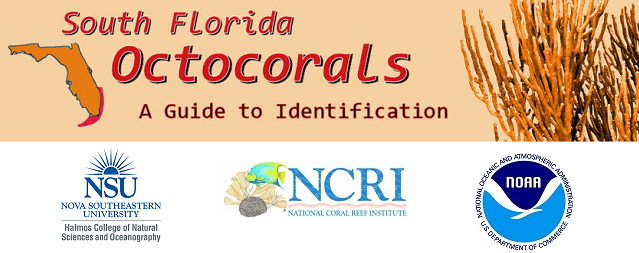Preview

Family
Gorgoniidae
Common Name(s)
Common sea fan
Colony Form
Monoplanar fan to at least 1 m across.
Axis
Cylindrical or slightly compressed in plane of fan on small interconnected branchlets (pinnules).
Branches
Major ascending branches tapering toward tips; smaller interconnected branchlets (pinnules) cylindrical or slightly compressed in plane of fan. Meshes polygonal, squarish or irregular.
Apertures
Round or oval, chiefly on sides of small branchlets.
Mucus
None
Color
Purple; occasionally yellow or brownish outside Florida.
Sclerites
Polyp armature: small rods 0.065-0.1 mm long. Body wall: acute spindles, and scaphoids (curved sclerites) with sculpture on convex side reduced to tiny thorns sometimes placed on low transverse ridges, to 0.14 mm long.
Habitat
Crests and seaward slopes of shallow reefs exposed to surge, at depths chiefly from 2 to 10 m; rarely below 15 m.
Distribution
Bermuda, South Florida, Bahamas, Caribbean Sea.
Similar Species
Date Taken
4-11-2016



Notes
Fans grow perpendicular to current and oscillating flow to maximize their surface area for feeding. Multidirectional flow may generate smaller accessory fans at right angles to the main fan. G. ventalinais preyed upon by several gastropods, including the ovulidsCyphoma gibbosum, Cybovula acicularis, Simnialena uniplicata, and the nudibranch Tritonia hamnerorum. Cronin et al. (1995) reported as many as 1,700 T. hamnerorum on a single fan. G. ventalina is also infected by the fungus Aspergillus sydowii, which causes necrosis and may kill the entire fan (see for example Harvell et al. 2001, Dube et al. 2002, Rypien 2008, and Toledo-Hernandez et al. 2008).